Horizon Zero Dawn straddles the past and future in much the same way as its post-apocalyptic setting, falling just a little ways short of its full potential when it leans too heavily on tired mechanics. It’s a good game, removed from true greatness only by its adherence to tired formulae.
Horizon Zero Dawn takes place in the far future, littered with the wreckage of a technological renaissance not so far removed from our own time. Here, the scattered remnants of humanity have been forcibly returned to their tribal roots. Modern conveniences are now strange and mysterious relics, humanity’s mistakes the basis of the game’s inhabitants’ mythologies. But while the world has changed around them, people remain the same. War and greed battle with unity and innovation for control of mankind’s collective future. On top of everything, robotic beasts roam the wild, saw-toothed artifacts of the past that threaten the tribes’ survival; they are also living resources for the survivors of mankind, as valuable as they are dangerous.
The game puts you in the boots of Aloy, a rebellious outcast from the Nora tribe. Exiled at birth without explanation, she is taken under the wing of a rugged warrior by the name of Rost. Your first steps within the Nora tribe’s hidden valley are those of a curious child, taught to track and hunt by Aloy’s adoptive father. It’s an elegant but entirely predictable form of a tutorial, simultaneously introducing both Aloy and the player to the world.
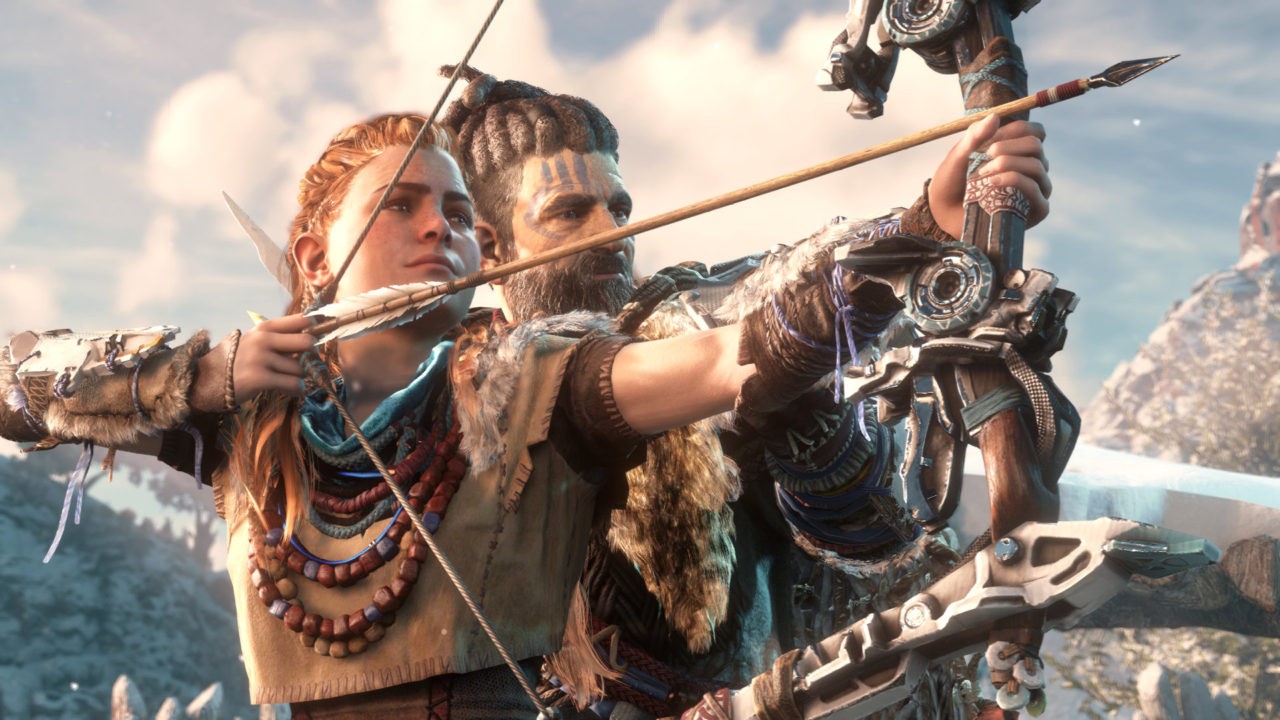
After that, you’ll spend the vast majority of your time hunting a wide variety of robotic fauna. Fortunately, this is where the game excels. Each creature is beautifully designed and well animated, with varying behaviors based on circumstance, environment, and the proximity of its allies. It means that the hulking technological denizens of Aloy’s world feel much more authentic than the animals that populate virtually any other game. Each species is capable of being deadly in its element, which means that almost any encounter can go bad in the blink of a glowing red eye.
You’ll need to make conscious use of the myriad weapons and environmental features at play, as well as the game’s serviceable stealth mechanics. You can dodge-roll around even the biggest foe while you pick at it with your spear, but things will be a whole lot easier if you funnel it into a chokepoint filled with traps and tear its armor away with some well-placed arrows before you finish the job.
When you’re not hunting robots, you’ll be hunting mundane animals. Boars, foxes, rabbits, and other animals are peppered through the world, and you will need to harvest their parts for upgrades and quests alike. Mostly they’ll drop various types of meat, with the occasional appearance of “rare” bones or hide. Couple the chance of “rare” ingredients with AI that simply makes a run for it whenever you’re remotely close, and you have an exceedingly tiresome mechanic that you are nevertheless required to perform, ad nauseum, if you want to earn precious inventory space. And since most of the content in the game boils down to collection, it’s almost non-negotiable.
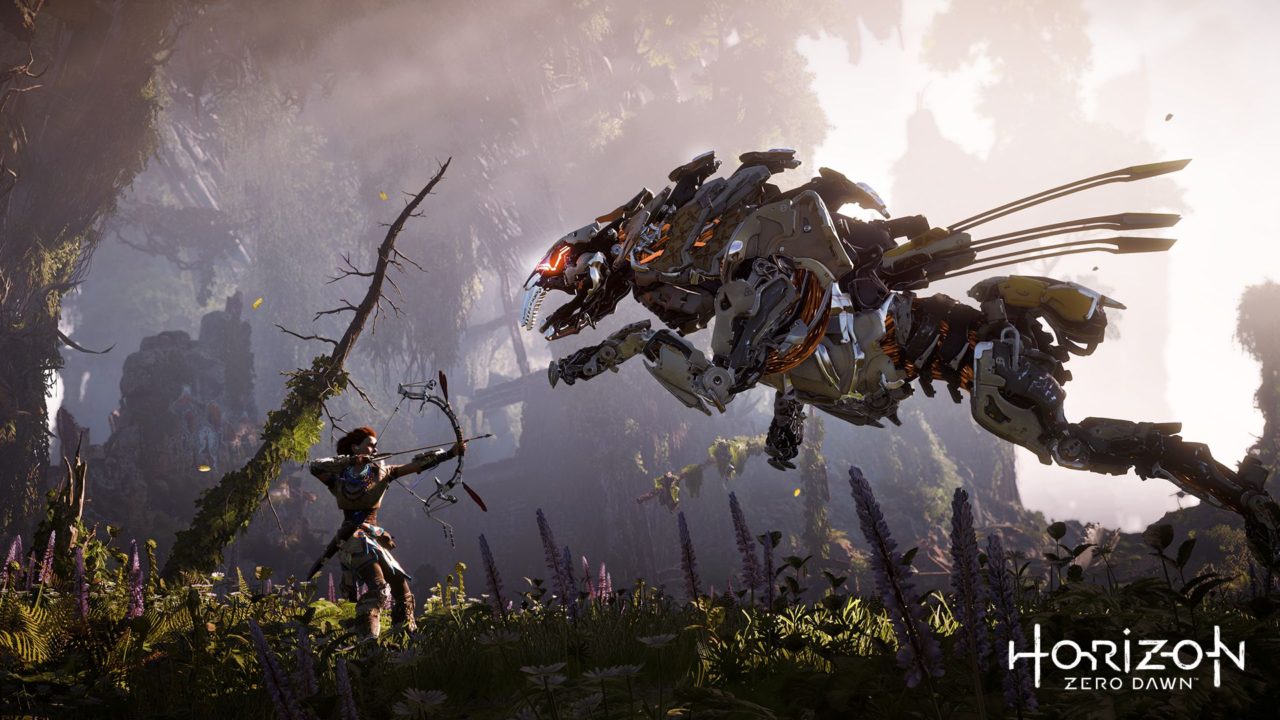
My time in developer Guerrilla Games’ fascinating world of Iron Age science-fiction was often split between moments of wonder and irritation. For the majesty of every vista, there were nagging lists of items to stockpile for the next marginal upgrade. One moment might introduce me to a peculiar new denizen of the wild world, and the next offer me a dozen effectively identical fetch quests. Someone with all of the thoughtful characterization of bread dough might be the bearer of unique and intricate lore.
It’s a difficult game to judge, and I’m still conflicted even as I write my review. At times it recalls The Witcher 3, with the same blend of intriguing lore and white-knuckled action. But it’s just as quick to pull from the Far Cry bag of tricks, sending you into the brush to collect an arbitrary bundle of weeds and animal parts so that you can earn a few more spaces in your inventory, which you’ll use to store more parts for another upgrade, and so on. A player’s enjoyment of the game will hinge on their relative interest or distaste for the two conflicting design philosophies.
Most major story progress will force you into combat with other humans. Unfortunately, none of the same care was taken with any of the animal (robotic and otherwise) population of this world. Whether human or beast, enemies’ behavior is, ironically, robotic. Combat with human foes — who lack awareness and any semblance of tactics, and quite literally spend most of their time standing around waiting to be slaughtered — is supplemented by linear underground platforming segments that Aloy completes almost entirely without your assistance. It’s an odd decision to lock the game’s central progress behind its weakest elements, but most such encounters are thankfully brief.
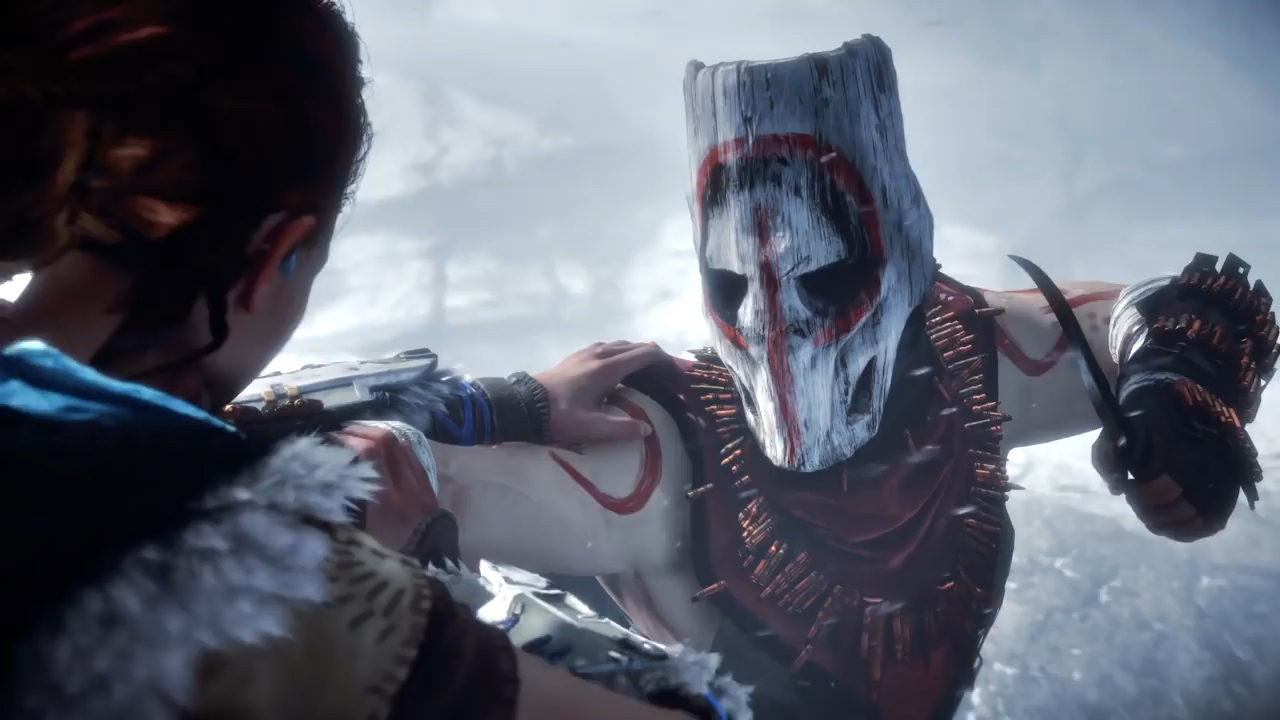
Whether part of the main quest line or one of the countless secondary excursions, most progress will reward you with fascinating looks into the over-arching narrative of this ruinous world. Everyone has something to say, and most have a lot to tell you. While you’ll meet plenty of relatively interesting characters, however, many seem to be little more than exposition mannequins. The things they have to say are usually interesting, but it’s hard to care about the person speaking.
Unfortunately, Horizon Zero Dawn is so preoccupied with building its enchanting far-future world that it forgets to do anything exceptionally interesting within it. It’s an almost self-congratulatory exercise in world-building that lacks truly compelling stories. And while that attention to the world’s foundation is admirable — and very entertaining in and of itself — there is little substance on top of it.
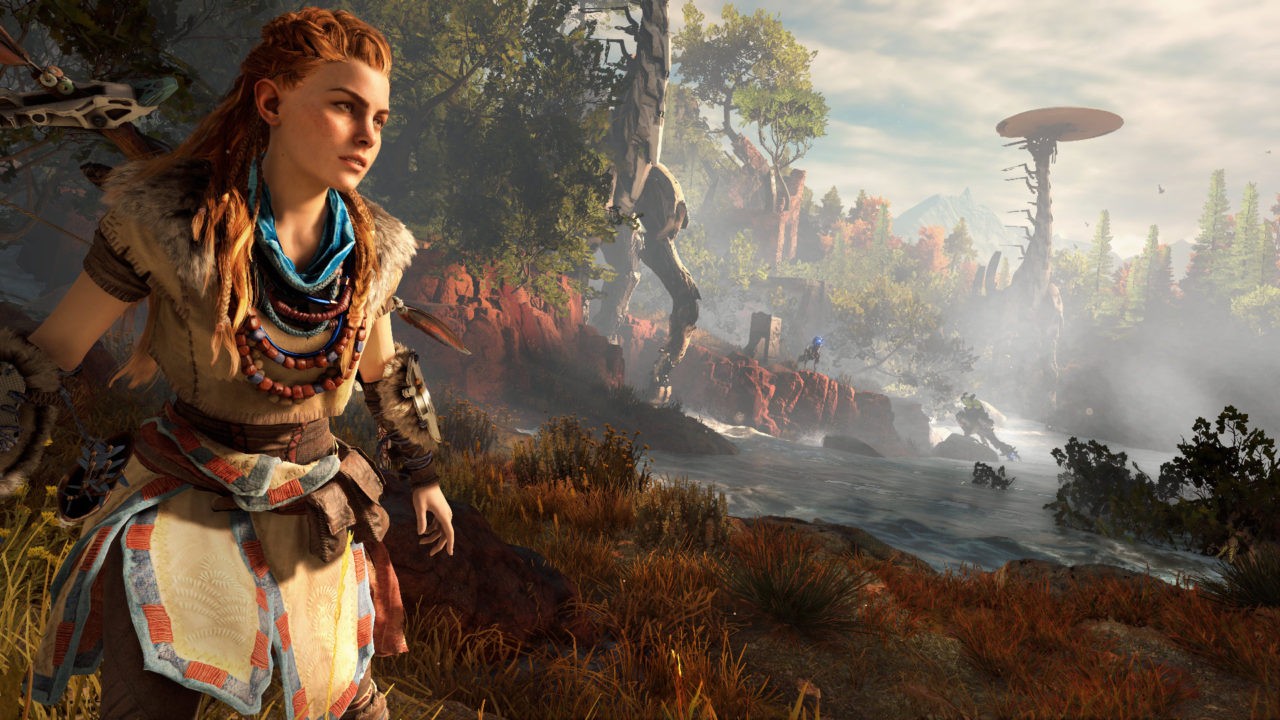
Ashley Burch delivers one of her best career performances here as the voice actor behind the player character, lending Aloy life and personality that the writing does not inherently provide. She is the forefront of a mostly impressive voice cast that does solid work with the relatively straightforward material. They are the beating heart of the game’s excellent sound design, and deserve a huge amount of credit for taking the edge off the gratingly familiar umpteenth errand on which the player is sent.
Graphically, the game varies between merely beautiful and absolutely gorgeous. While both versions are locked at a hard 30 frames per second, the PS4 Pro with an HDR-enabled TV delivers some pretty inspiring visuals. Without that, you are still left with a game that looks better than most, but the lack of contrast smears across the framerate in a way that can often make the visuals indistinct. It is clear that Horizon Zero Dawn was designed for the Pro, but it is a visual treat regardless of how you experience it.
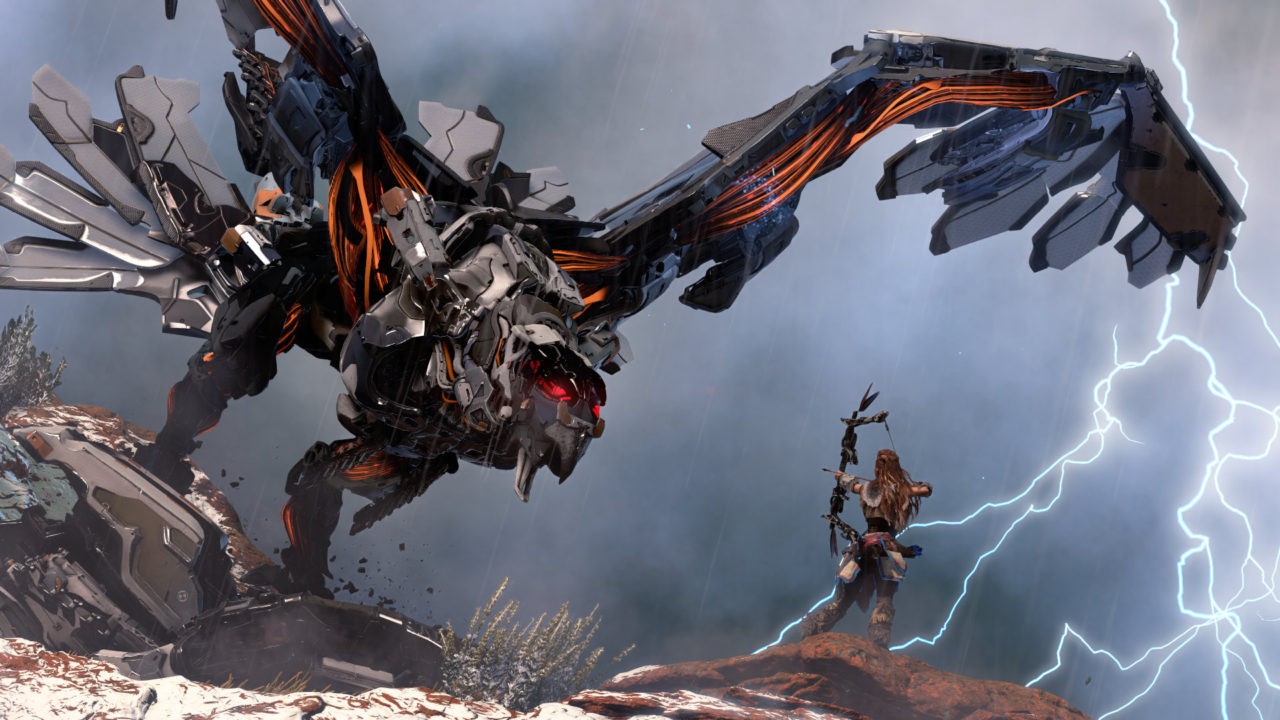
As always, my review leans toward the critical in an attempt to provide a complete picture of the experience. But make no mistake; Horizon Zero Dawn is a great game. It doesn’t always reach its lofty goals, and often falls short when it leans too heavily on unnecessary video-gamey busywork. Still, it remains an easy recommendation to anyone who enjoys vast open-world action adventures like The Witcher 3, Skyrim, or Zelda: Breath of the Wild.
Despite my criticisms, I enjoyed my time with it, and there’s no doubt I’ll be back to comb every last corner of this strange melting pot of past and future for whatever secrets they may hold. Buy it if you love the open-world adventure genre and/or games that focus on building their intricate original worlds.
Follow Nate Church @Get2Church on Twitter for the latest news in gaming and technology, and snarky opinions on both.
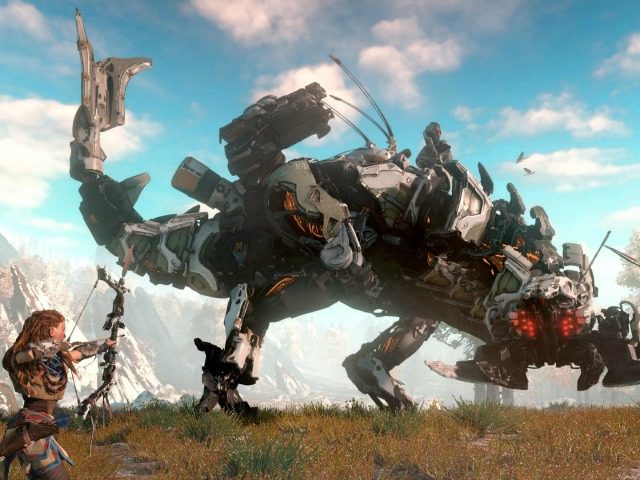
COMMENTS
Please let us know if you're having issues with commenting.